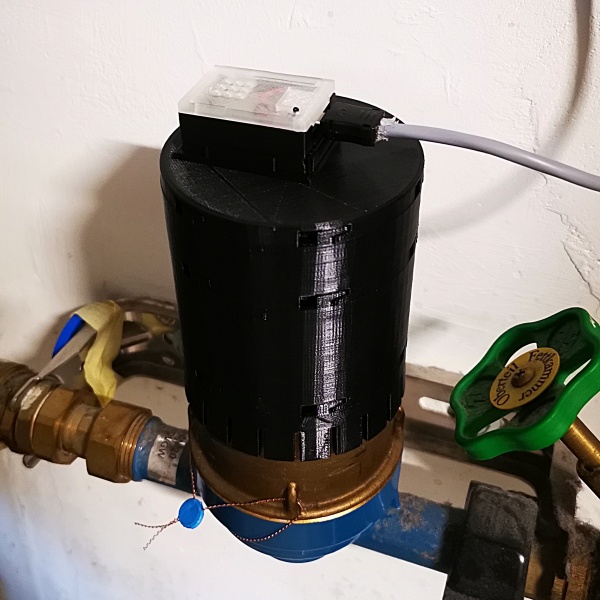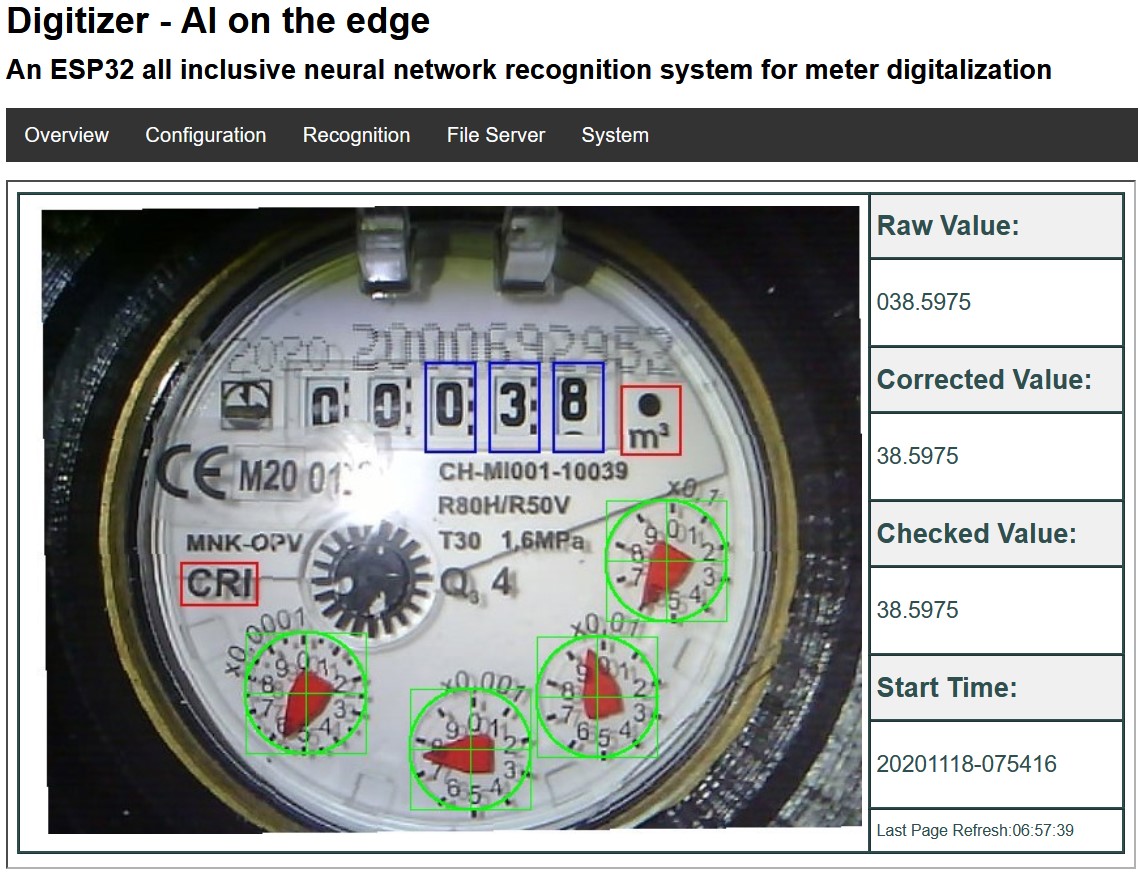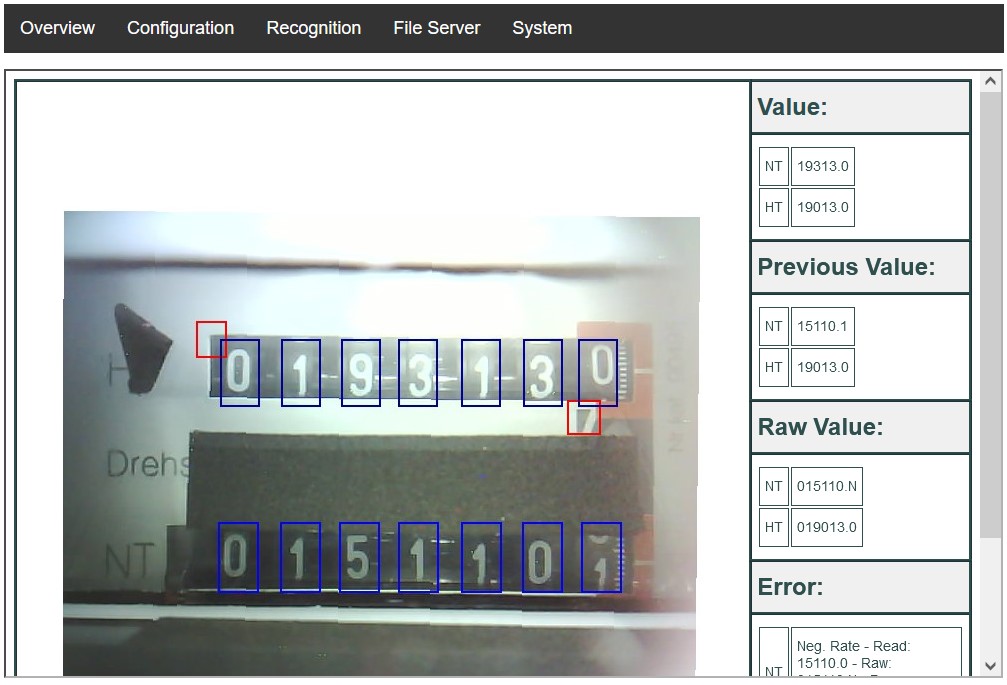Artificial intelligence based systems have become established in our everyday lives. Just think of speech or image recognition. Most of the systems rely on either powerful processors or a direct connection to the cloud for doing the calculations there. With the increasing power of modern processors, the AI systems are coming closer to the end user – which is usually called edge computing. Here, this edge computing is put into a practically oriented example, where an AI network is implemented on an ESP32 device so: AI on the edge.
This project allows you to digitize your analog water, gas, power and other meters using cheap and easily available hardware.
All you need is an ESP32 board with a supported camera and something of a practical hand.
- Tensorflow Lite (TFlite) integration – including easy-to-use wrapper
- Inline image processing (feature detection, alignment, ROI extraction)
- Small and cheap device (3 x 4.5 x 2 cm³, < 10 EUR)
- Integrated camera and illumination
- Web interface for administration and control
- OTA interface for updating directly via the web interface
- Full integration into Homeassistant
- Support for Influx DB 1 and 2
- MQTT
- REST API
The device takes a photo of your meter at a defined interval. It then extracts the Regions of Interest (ROIs) from the image and runs them through artificial intelligence. As a result, you get the digitized value of your meter.
There are several options for what to do with that value. Either send it to an MQTT broker, write it to an InfluxDb or simply provide access to it via a REST API.
There is growing documentation which provides you with a lot of information. Head there to get a start, set it up and configure it.
There are also articles in the German Heise magazine "make:" about the setup and technical background (behind a paywall): DIY - Setup
A lot of people created useful Youtube videos which might help you getting started. Here a small selection:
- youtube.com/watch?v=HKBofb1cnNc
- youtube.com/watch?v=yyf0ORNLCk4
- youtube.com/watch?v=XxmTubGek6M
- youtube.com/watch?v=mDIJEyElkAU
- youtube.com/watch?v=SssiPkyKVVs
- youtube.com/watch?v=MAHE_QyHZFQ
- youtube.com/watch?v=Uap_6bwtILQ
For further background information, head to Neural Networks, Training Neural Networks and Programming on the ESP32.
The latest available version can be found on the Releases page.
Initially you will have to flash the ESP32 via a USB connection. Later updates are possible directly over the air (OTA using WIFI).
There are different ways to flash your ESP32:
- The prefered way is the Web Installer and Console which is a browser-based tool to flash the ESP32 and extract the log over USB:

- Flash Tool from Espressif
- ESPtool (command-line tool)
See the documentation for more information.
The SD card can be setup automatically after the firmware got installed. See the documentation for details. For this to work, the SD card must be FAT formated (which is the default on a new SD card). Alternatively the SD card still can be setup manually, see the documentation for details!
Various 3D-printable housing can be found here:
- https://www.thingiverse.com/thing:4573481 (Water Meter)
- https://www.thingiverse.com/thing:5028229 (Power Meter)
- https://www.thingiverse.com/thing:5224101 (Gas Meter)
- https://www.thingiverse.com/thing:4571627 (ESP32-cam housing only)
If you would like to support the developer with a cup of coffee, you can do that via PayPal.
If you have any technical problems please search the discussions. In case you found a ug or have a feature request, please open an issue.
In other cases you can contact the developer via email: ![]()
See Changelog.
See Build Instructions.
- Logfile downloader and combiner (Thx to reserve85)
- Files see '/tools/logfile-tool', how-to see documentation
There are some ideas and feature requests which are not currently being pursued – mainly due to capacity reasons on the part of the developers. They features are collected in the issues and in FeatureRequest.md.







